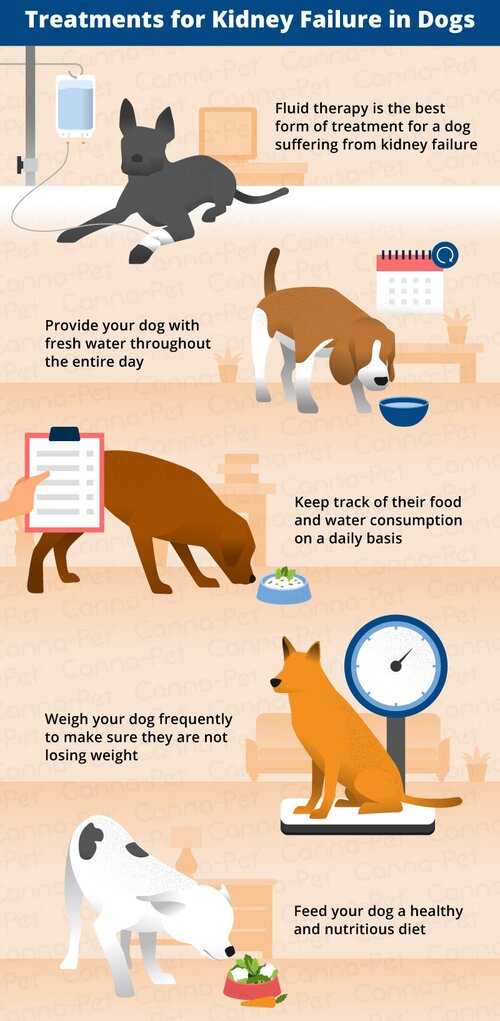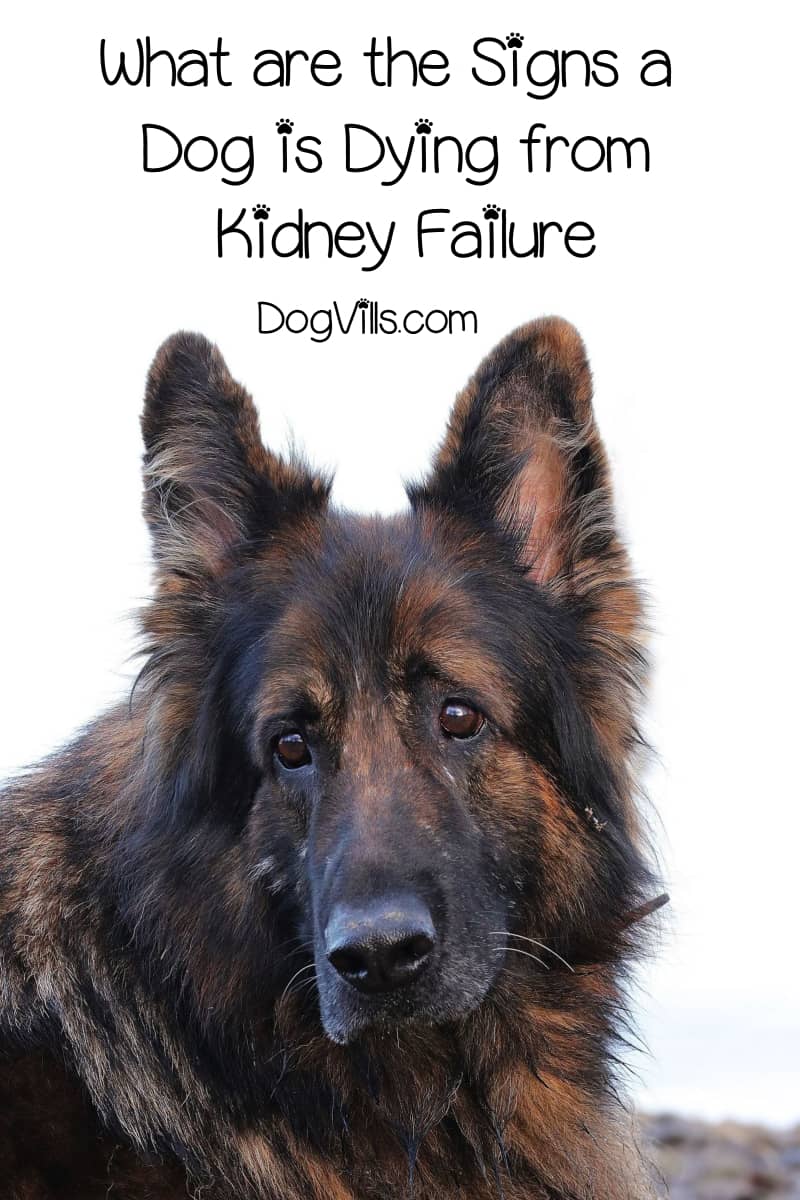
Additionally many dogs in late-stage kidney disease suffer from incontinence which can place a strain on the entire family including your dog. Kidney failure technically happens when the kidneys can no longer perform their function efficiently and in dogs there are two broad categories.

Median survival time for dogs in Stage 1 is more than 400 days while Stage 2 ranged from 200 to 400 days and Stage 3 ranged from 110 to 200 days.
Last days of dog with kidney failure. There is no way to determine how long a dog will stay in the early stages of kidney failure before moving into the late stages. Symptoms of kidney failure According to Adamson Veterinary Services in addition to increased thirst and urination a dog may demonstrate symptoms including lethargy loss of appetite and a poor coat quality or a ragged coat. The last days of a dog with kidney failure will be characterized by symptoms such as difficulty breathing incontinence periodic seizures trembling shaking loss of balance coordination drastic weight loss frequent vomiting diarrhea lethargy fatigue depression and severe dehydration.
In small dogs kidney failure issues generally show up after 10 to 14 years whereas in large dogs kidney problems can begin after six years of age. When age advances the filtration capability of kidneys becomes slower inefficient and ineffective. If your dog is diagnosed with stage 1 or 2 kidney disease life expectancy is years.
Unfortunately on the other hand if your dog is diagnosed with stage 3 to 4 kidney disease leading to kidney failure you could be looking at weeks and months. Symptoms Of Kidney Disease In Dogs. Here are some of the symptoms of kidney disease in dogs.
Though each dog can vary the most common symptoms include. Increase in thirst. Increase of accidents around the house.
Ulcers in the mouth. Additionally many dogs in late-stage kidney disease suffer from incontinence which can place a strain on the entire family including your dog. You can provide a happy life for your dog in their final days weeks or months after receiving a diagnosis.
This can last less than an hour or up to a full day. Be aware that this is a natural part of the dying process and not a reflection of your relationship. Maintain a physical presence by touching the dying person and continuing to talk if it feels appropriate without demanding anything back.
Signs of Kidney Failure in Dogs Chronic kidney disease blood in the urine vomiting general weakness increase in urination even at night excessive thirst bad breath ulcers in the mouth low mobility hunched posture muscular weakness loss of balance convulsions paws or other body parts swollen due to water retention blood in the eyes retinal detachments Acute kidney failure. Chronic renal failure is usually undetectable until late in the second stage or early third stage when 65 to 75 percent of the dogs kidney tissue has already been destroyed according to the Canine Kidney website. Some of the early warning symptoms are.
If your dog is going through renal failure then it means a large part of hisher kidneys has been affected. Kidney damage will not be apparent until 23 of the kidney has been destroyed. This part will not regenerate itself and requires medical attention.
Age is often the factor for this condition. What are the symptoms of a dog dying from renal failure. Whilst there are a range of renal failure symptoms to look out for in your dog the symptoms of advanced renal failure are alongside with the signs mentioned above the best indication of whether it is time to let your dog slip away.
Here are some of the most common symptoms of advanced stage 4 renal failure. There are 4 stages of kidney disease in dogs and this is how it will look on your dogs blood test. Stage 1 Creatinine concentration levels are often less than 14 mgdL.
Stage 2 Creatinine concentration levels will be between 14-20 mgdL. At this point clinical signs may not be noticed yet. But you may notice your dog drinking or be urinating more.
The ideal diet for a dog in the advanced stages of kidney failure is lower in protein low in phosphorus and is not acidified. This type of diet helps reduce the amount of protein wastes or metabolic toxins that may make your pet feel sick and lethargic. In advanced kidney disease a decreased protein diet will also decrease the workload on the kidneys.
Kidney failure technically happens when the kidneys can no longer perform their function efficiently and in dogs there are two broad categories. When kidney function suddenly decreases within hours or days this is known as acute renal failure. It is usually related to toxins or infections.
Its best if some treatments are started when the pet is at a specific stage of chronic kidney disease. Median survival time for dogs in Stage 1 is more than 400 days while Stage 2 ranged from 200 to 400 days and Stage 3 ranged from 110 to 200 days. End-Stage Renal Disease in Dogs.
Chronic kidney disease is progressive and there is no cure. Ultrasound or X-rays may be used so that your vet can take a look at your dogs kidneys the organs can often change in size and appearance when a pet is suffering from renal failure. Once a dog is diagnosed with kidney disease vets may asses their blood to stage the condition to help determine treatment.
It goes from stage I where pets show evidence of disease but no change. Other signs and symptoms of kidney failure in dogs are sudden changes in your dogs health and well-being. If your dog begins to act sick very suddenly this could be related to kidney failure and you should see your vet immediately.
Treatments for Kidney Failure in Dogs. A staple treatment for dogs suffering from kidney failure is fluid therapy. What Is Kidney Failure In Dogs.
Canine kidney failure is a disease characterized by the inability of the kidneys to filter out toxins from the body. Like the organism of humans that of our dog it also produces toxins. If the kidneys function normally they will be eliminated from our body without problems.
Kidney failure also known as renal failure refers to the inability of the kidneys to effectively filter waste products out of the blood. However because the symptoms of kidney disease often dont present until at least two-thirds of kidney tissue has been destroyed most cases can cause damage to a dogs kidneys over a period of months or even years.